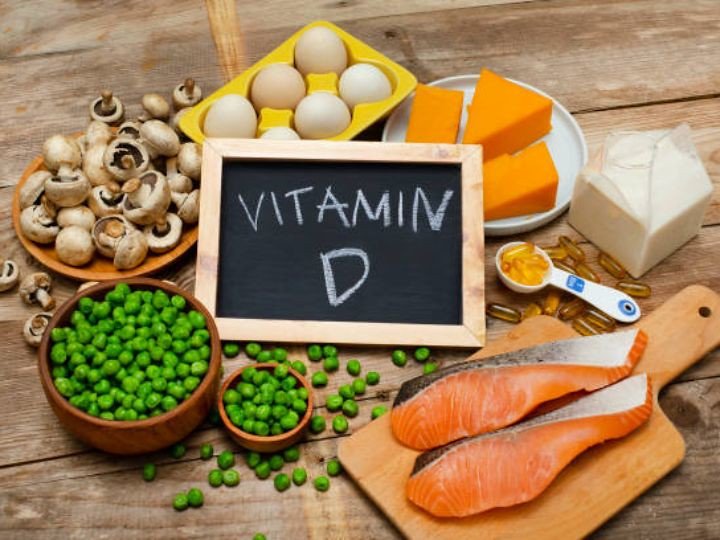The Importance of Vitamin D: From Sunlight to Bone Health
Vitamin D3 or maybe you have heard of the word cholecalciferol as a supplement, vitamin D2 or Ergocalciferol (as a capsule), Calcidiol, and Calcitriol all refer to different types of vitamin D in the body or in the food we eat or we get from sunlight. Talking about sunlight, vitamin D3 also known as cholecalciferol is the type of vitamin D made naturally by the body in response to sunlight. When we look at vitamin D2 or Ergocalciferol, it is usually gotten from plants.
When you go out to purchase vitamin D supplements, they exist in form of vitamin D2 and vitamin D3. When we look at Calcitriol (1,25-dihydroxyvitamin D) is the active form of vitamin D in the body. When you decide to take that morning walk down your street and the sun shines on your skin, the sun shines UV-B on the skin where it turns 7-Dehydroxycholesterol into vitamin D3 (cholecalciferol).
The vitamin D3 binds to vitamin D binding protein where it gets transported to the liver to be converted to Calcidiol (25-dihydroxyvitamin D) which is the storage form of vitamin D in the body and when it is needed, it is converted to the active form Calcitriol (1,25-dihydroxyvitamin D) and it mainly occurs in the kidney and many other parts of the body such as the lymph nodes, Alveolar Macrophages, and in the alveolar cells.
Vitamin D, along with three other vitamins are fat soluble vitamins which means they can be stored in the liver causing them to be available when needed but this can also be dangerous to our health as they can become excessive in our body leading to toxicity but then this can only happen if large dose of supplements are taken over a time-frame.
Asides from the Sun, we can get vitamin D3 from a few food source naturally and they include fatty fishes such are salmon, mackerel (for those who still eat them), tuna, cod, and swordfish. I read your mind, and you wanted to ask what about milk? Milk actually doesn't naturally have vitamin D3 but it has been fortified for over a century now to have vitamin D3. It is important to know that vitamin D3 mainly comes from sunlight and not the food we ingest.
With vitamin D3 in the body, the intestine is signaled to absorb calcium into the bloodstream, which means that without it, the body will start to breakdown the bones in other to increase the calcium level in the blood. It also helps to reduce fracture in elderly by preventing muscle deterioration. So when there is vitamin D deficiency, it means that specific health problems arise as a direct result of not having enough vitamin D so in children, it causes rickets which is a bone disease where the legs are bowed, and in adults, vitamin D deficiency can lead to osteomalacia which is the softening of the bone and osteoporosis (bone fracture.)
Someone asked me yesterday if he could get toxic level of vitamin D for staying in the sun for a very long time, and I laughed before I responded to the person. The answer is straight NO. Unless you are ingesting a supplement, you cannot have toxic level of vitamin D by lying under the sun for a prolonged period. The only thing you are guaranteed to get is sunburn not also leaving out the risk of skin cancer.
Understanding the different forms and functions of vitamin D sheds light on its essential role in maintaining overall health and well-being. Whether obtained from sunlight or dietary sources, ensuring sufficient vitamin D intake is key to supporting various bodily functions and preventing adverse health outcomes.
Reference
- https://www.mayoclinic.org/drugs-supplements/cholecalciferol-oral-route/description/drg-20088484
- https://www.mayoclinic.org/drugs-supplements/ergocalciferol-oral-route/side-effects/drg-20523253?p=1
- https://www.medicalnewstoday.com/articles/161618
- https://www.ncbi.nlm.nih.gov/pmc/articles/PMC3356951/
- https://www.nature.com/articles/s41574-021-00593-z
- https://www.medicalnewstoday.com/articles/320310
- https://extension.colostate.edu/topic-areas/nutrition-food-safety-health/fat-soluble-vitamins-a-d-e-and-k-9-315/
- https://www.ncbi.nlm.nih.gov/pmc/articles/PMC2698592/
- https://www.ncbi.nlm.nih.gov/pmc/articles/PMC3941824/
- https://www.researchgate.net/publication


It seems to me that this conversion depends on the amount of UVB that one receives. Apparently, the sun filters out UVB radiation. Windows and sunscreen also filter the rays.
It appears that the intensity of UVB radiation changes by location and time of the year.
Intense UVB radition causes skin cancer.
It seems to me that the trick is to figure out the best time to go outdoors.
The earth is tilted. So sun rays travel through more atmosphere during the Winter. I understand that people in Northern climates receive insufficient UVB rays during the Winter. This is the most likely reason that people in Northern climates lost their natural skin pigmentation.
I live in Utah. In the Winter I try to catch some sun at noon. In the summer I avoid being outside at noon and opt for mornings and evenings.
I wish that there was better guidance on this issue. The AMA is so worried about skincancer that they fail to feed us good information.
!WINE
Thank you for your witness vote!
Have a !BEER on me!
To Opt-Out of my witness beer program just comment STOP below
View or trade
BEER.Hey @irivers, here is a little bit of
BEERfrom @isnochys for you. Enjoy it!Did you know that <a href='https://dcity.io/cityyou can use BEER at dCity game to buy cards to rule the world.
Thanks for your contribution to the STEMsocial community. Feel free to join us on discord to get to know the rest of us!
Please consider delegating to the @stemsocial account (85% of the curation rewards are returned).
Thanks for including @stemsocial as a beneficiary, which gives you stronger support.